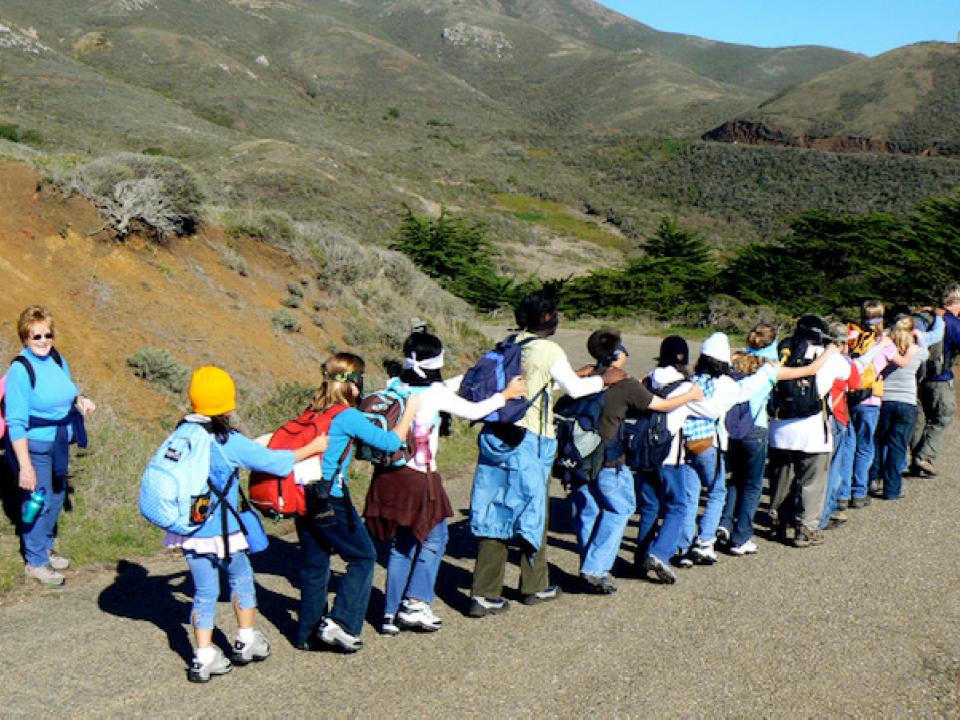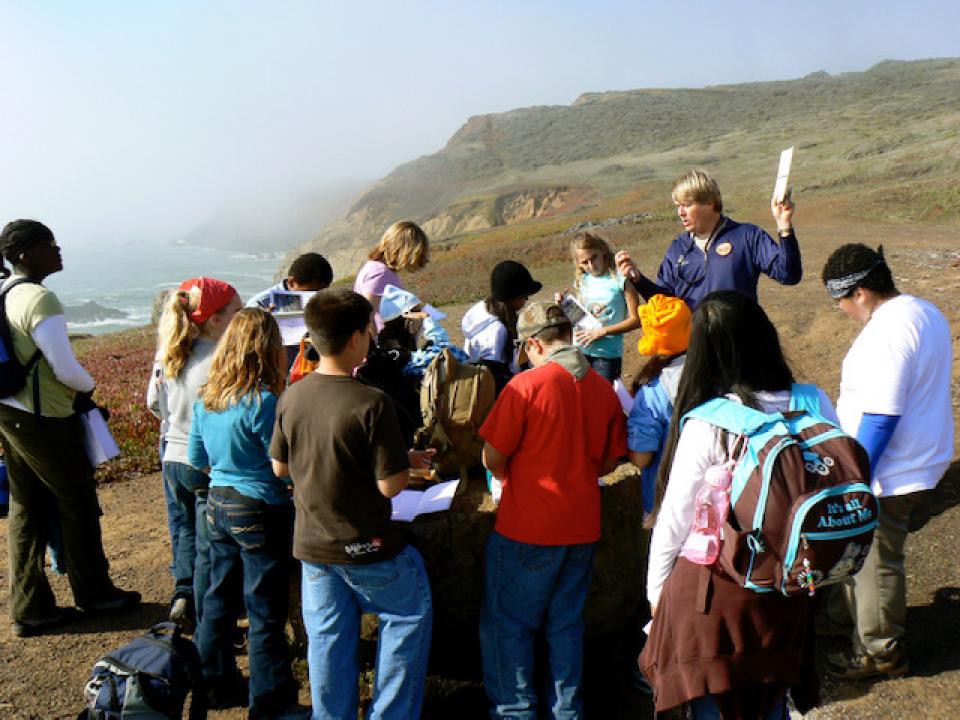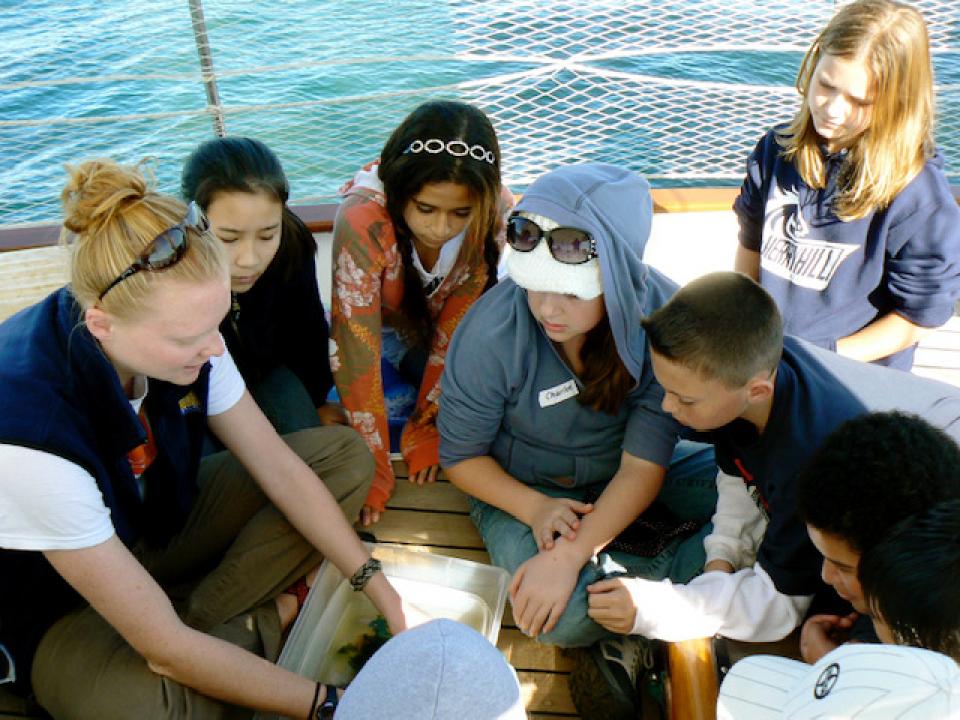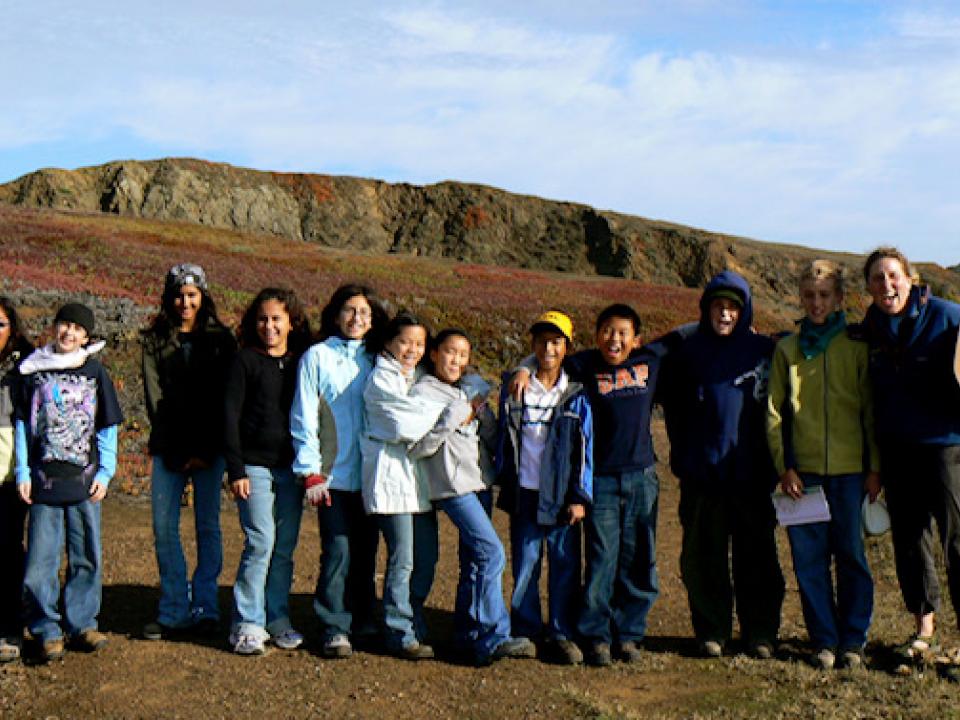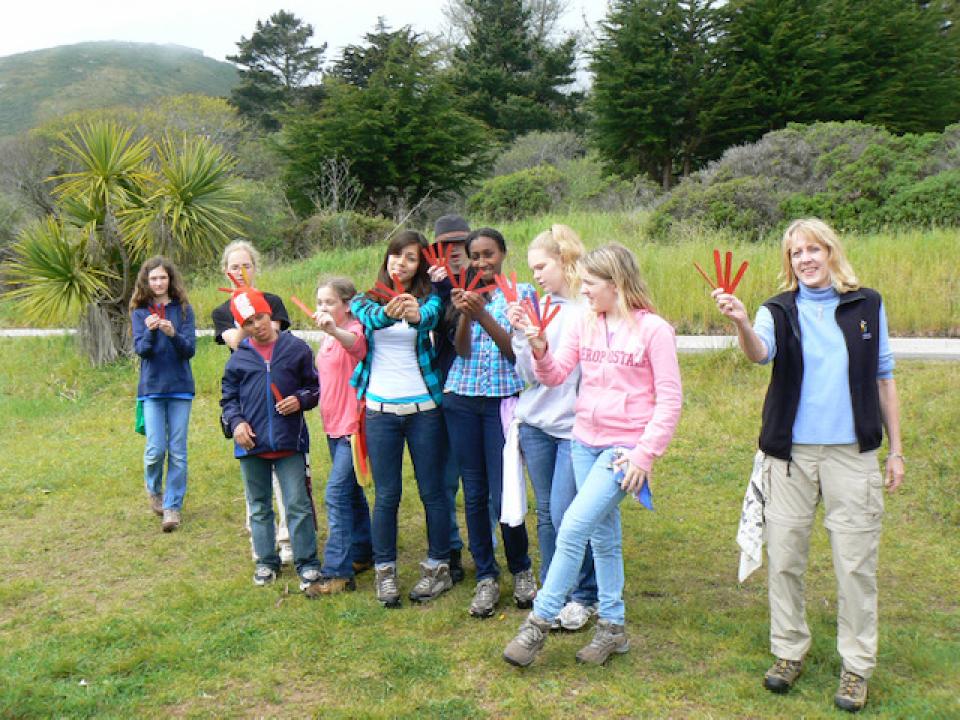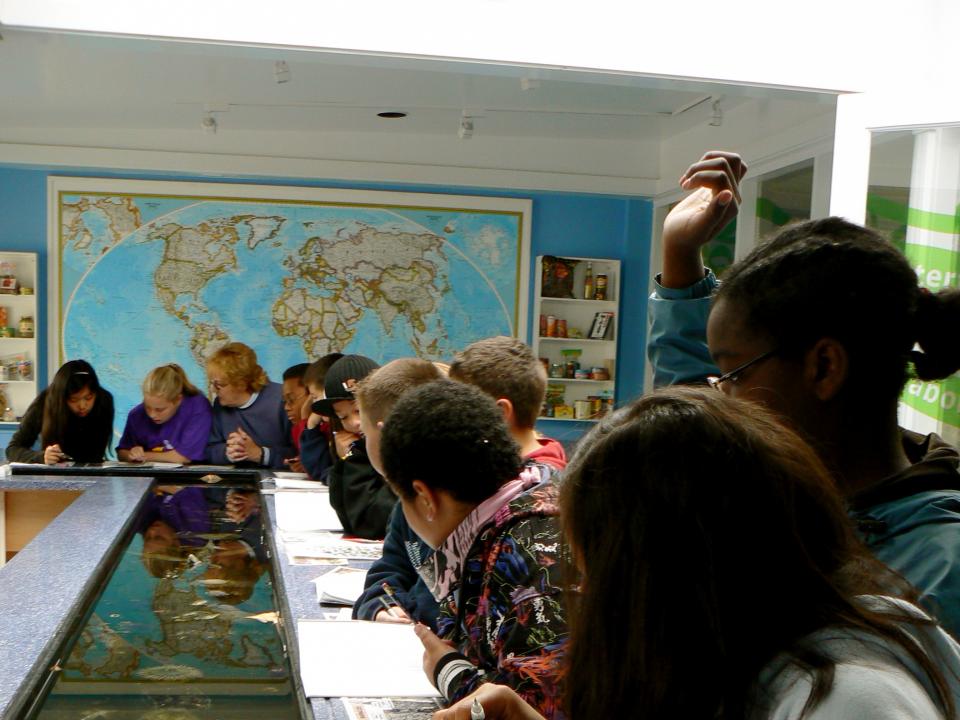50 Stories for 50 Years: Kim Gesicki-Robinson
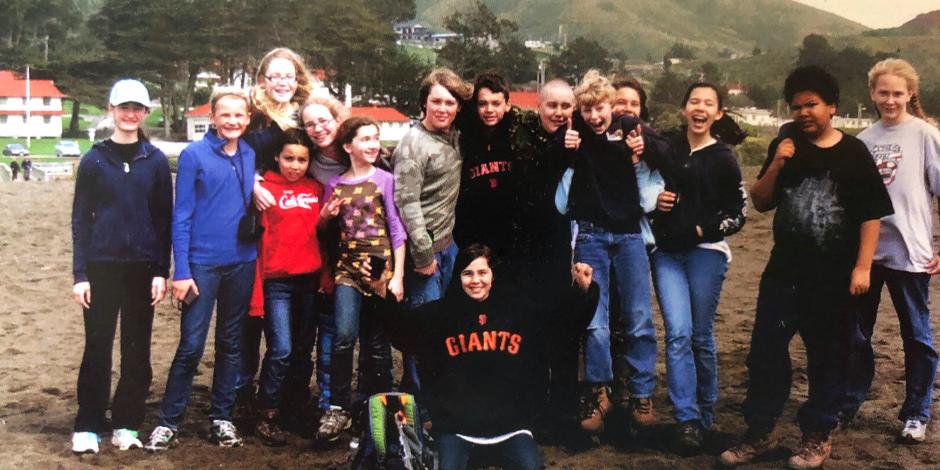
“II was pretty gross right before this. I was cleaning algae and silt off myself just a second ago!”
Kim Gesicki-Robinson arrived at our virtual interview right on time, looking nothing close to “pretty gross.” She had just come from one of her favorite local nonprofits in Davis, California where she volunteers, bringing underserved students out to explore the nearby wetlands.
“What I have to do is grab buckets and get in the mud, the ponds, and scoop up invertebrates or other lifeforms,” says Kim. “The kids get so excited about seeing these water boatmen or mosquito fish; it’s been rewarding since I can’t always make it out to Marin Headlands [NatureBridge’s campus].”
Kim retired in 2019 after spending 30+ years as a teacher, and nearly as many years bringing her students to NatureBridge. After speaking with her for a short time, it’s no surprise that she’d find a way to bring kids into the outdoors even after retirement. It was some of the most meaningful work she did as a teacher, and it was some of the most meaningful time the students spent with her.
“I have former students of mine, some of them in their 30s and 40s, who came to visit me after I retired and all they talked about was our time at NatureBridge.”Kim Gesicki-Robinson
Kim’s own experience with NatureBridge dates back to 1991, her first time taking students into Golden Gate National Recreation Area for several days of NatureBridge programming. It left a profound impression on both her and the kids.
“One night and two days, that’s all it took,” she laughs. “From the very beginning, it was beyond the natural beauty. We were learning about nature, diversity, acceptance — it changed the kids.”
She remembers one particularly shy sixth grade student who shed his inhibitions during their time at NatureBridge, transforming into a leader before her eyes.
“He felt more confident, happier; he started talking differently and acting differently. Even when they got back to school, other kids still looked at him as a leader,” says Kim. “I keep in touch with him and he said NatureBridge changed his life, and he’s not the only one.”
“I really want the programs to come back,” she sighs.
For more than a year, the COVID-19 pandemic took away the opportunity for kids to take part in any in-person programs. They were stuck inside, taking classes via Zoom, “visiting” family on their phones and being socialized without any physical proximity. Teachers, too, felt this toll, with burnout common and new class setups proving to be difficult or ineffective.
“I know several teachers who retired early because of the pandemic and the way they had to teach. They would have a classroom half-full, but then also be teaching via Zoom at the same time; it was just impossible,” says Kim.
What Kim has observed as a problem for teachers is backed by a data-driven maxim: the best kind of scientific learning is hands-on. There is overwhelming evidence that especially in the fields of science, technology, engineering and mathematics (STEM), in-person, hands-on experience is critical for educational development. NatureBridge provides just that.
Kim sees NatureBridge as providing something else, too: tools for recovering from the pandemic. Part of that is due to NatureBridge’s emphasis on social-emotional learning (SEL), which has numerous benefits for both students and teachers.
“When [my students and I] came back from NatureBridge, we were as one, because we'd been through these completely new and different experiences,” says Kim. “And I would use the skills I’d learned — the social skills, the emotional skills, the way they’d get kids together — I’d incorporate them into my classroom.”
There are studies that show a positive link between close teacher-student relationships and educational and social development. There is even data that suggest reduced burnout and improved mental health for teachers can result from the fostering of close relationships with their students. Combine the strengthening of student-teacher bonds with social-emotional learning and time spent in nature, and NatureBridge has an opportunity to help restore much of what was lost in the isolating pandemic school year.
“NatureBridge really focuses on the whole child. I hope schools start to do more of that post-pandemic, because it’s so necessary.”Kim
Kim’s face lit up when she found out NatureBridge’s in-person programs were returning. She’s the perfect example of a teacher whose best qualities are highlighted with programs like these, and who augments the program experience with those same qualities: her desire for hands-on teaching, her social-emotional skill set, her investment in a close relationship to her students, and of course, her love of the outdoors.
It’s no wonder she was asked to nominate the first-ever NatureBridge Student of the Year, or that she’s been invited to NatureBridge events where she rubbed elbows with Kamala Harris and Jane Goodall.
If every student in the world had a Kim Gesicki-Robinson, there’d be a lot less to worry about with kids coming out of the pandemic. She feels the same way about NatureBridge and its environmental education.
“Gosh, it was so important, it was 100% important...it was everything.”
